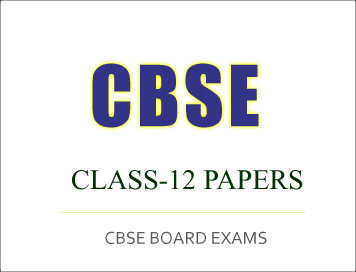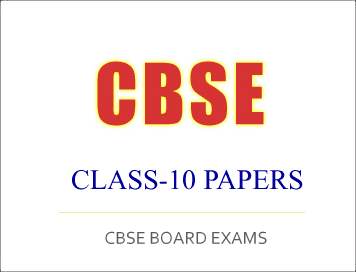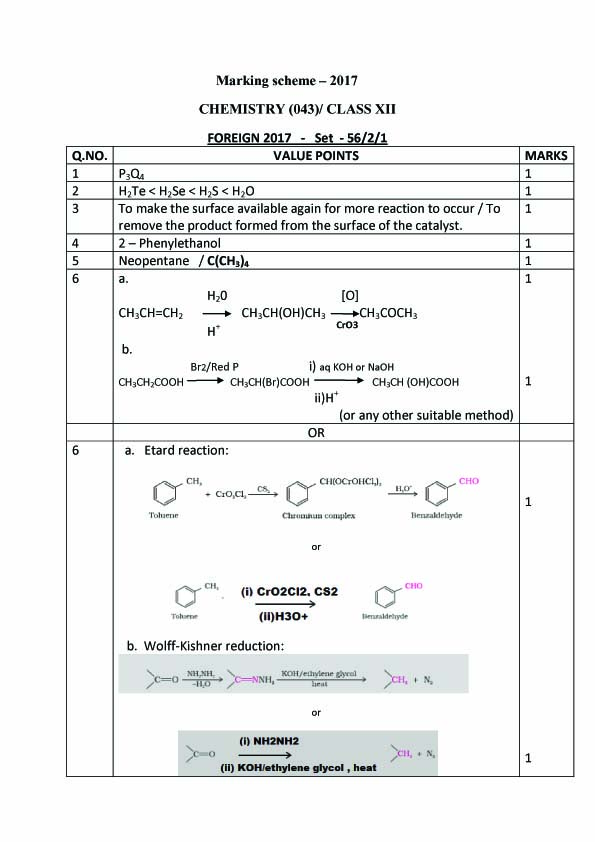CBSE PORTAL : CBSE Class-12 Exam 2017 : All India Scheme Question Paper, Sociology | |
- CBSE Class-12 Exam 2017 : All India Scheme Question Paper, Sociology
- CBSE Class-12 Exam 2017 : All India Scheme Question Paper, Philosophy
- CBSE Class-10 Exam 2017 : All India Scheme Question Paper, Information And Communication Technology
- CBSE Class-10 Exam 2017 : All India Scheme Question Paper, National Cadet Corps
- CBSE Class-10 Exam 2017 : All India Scheme Question Paper, Foundation of Information Tech
- CBSE Class-10 Exam 2017 : All India Scheme Question Paper, Painting
- CBSE Class-12 Exam 2017 : Marking Scheme, Chemistry
- CBSE Class-10 Exam 2017 : Marking Scheme, English Communicative
| CBSE Class-12 Exam 2017 : All India Scheme Question Paper, Sociology Posted: 06 Jul 2017 04:14 AM PDT  CBSE Class-12 Exam 2017 : All India Scheme Question Paper, SociologyCBSE Class-12 Exam 2017 : Sociologyसमाजशास्त्र Sociology १. भारत में बाल qलगानुपात के ह्रास (पतन) के लिए उत्तरदायी कारणों का उल्लेख कीजिए । १+१=२ Mention the factors responsible for the decline in the child sex ratio in India. २. जनजातीय लोग कौन होते हैं ? २ Who are the tribals ? ३. बाजारीकरण से किस प्रकार के परिवर्तन होते हैं ? २ What changes have taken place due to marketisation ? ४. विशेषाधिकार प्राप्त अल्पसंख्यक राजनीतिक रूप से आलोच्य कैसे हैं ? २ How are the privileged minorities politically vulnerable ? ५. "भारतीय राष्ट्रवाद में, प्रभावशाली प्रवृत्ति समावेशात्मक और लोकतंत्रात्मक दृष्टि द्वारा चिङ्घित रही ।" इस कथन में आप ' समावेशात्म ' और ' लोकतंत्रात्म ' शब्दों से क्या समझते हैं ? २ "In Indian nationalism, the dominant trend was marked by an inclusive and a democratic vision." What do you understand by the words ' inclusive‖ and ' democratic‖ in this statement ? ६. औद्योगीकरण, वि-औद्योगीकरण कैसे लाता है ? २ How does industrialisation lead to de-industrialisation ? ७. आधुनिकता का क्या अर्थ है ? २ What is the meaning of modernity ? ८. पंचायतों के राजस्व (आय) के साधन (स्रोत) क्या हैं ? उदाहरण दीजिए । २ What are the sources of revenue for the panchayats ? Give examples. ९. टी.एन.सी. भारतीय लोगों (श्रोताओं) के साथ किस प्रकार समायोजित हो पाए ? २ In what way have TNCs adapted to the Indian audiences ? १०. भारतीय भाषा के समाचार-पत्रों ने लोकप्रिय होने के लिए किन रणनीतियों (ीींीरींशसळशी) का प्रयोग किया ? २ What strategies have been used to make the Indian language newspapers popular ? Click Here to DownloadCourtesy: CBSE
|
| CBSE Class-12 Exam 2017 : All India Scheme Question Paper, Philosophy Posted: 06 Jul 2017 04:08 AM PDT  CBSE Class-12 Exam 2017 : All India Scheme Question Paper, PhilosophyCBSE Class-12 Exam 2017 : Philosophyदर्शनशास्त्र PHILOSOPHY १. सद्गुण नीतिशास्त्र से क्या तात्पर्य है ? What is meant by virtue ethics ? २. दैवी आदेश सिद्धान्त से कौन-सी सामाजिक समस्या उत्पन्न होती है ? व्याख्या कीजिए । What is the social problem generated by the Divine Command Theory ? Explain. ३. ‘वर्णधर्मङ्क की परिभाषा दीजिए । Define ‘Varn. adharma’. ४. पुरुषार्थ के रूप में अर्थ का वर्णन कीजिए । Describe artha as a purushārtha. ५. जे.एस. मिल के ‘उपयोगितावादीङ्क सिद्धान्त की परिभाषा दीजिए । Define J.S. Mill’s doctrine of ‘Utilitarianism’. ६. जैनों की सम्यक् ज्ञान की अवधारणा की परिभाषा दीजिए । Define Jaina conception of Samyak jn~a-na (right knowledge). ७. भगवद्गीता में वर्णित स्वधर्म सिद्धान्त का वर्णन कीजिए । Describe Bhagvadgi ta ’s doctrine of svadharma. ८. ॠत की वैदिक अवधारणा की परिभाषा दीजिए । Define the vedic notion of R. t. ९. बुद्ध द्वारा प्रतिपादित प्रतीत्यसमुत्पाद सिद्धान्त से क्या तात्पर्य है ? What is meant by Buddhist doctrine of pratityasamutpada ? १०. बुद्ध द्वारा प्रतिपादित ‘मध्य मार्गङ्क की अवधारणा की परिभाषा दीजिए । Define Buddha’s notion of ‘middle path’. ११. ‘दण्ड के जैसे को तैसा सिद्धान्तङ्क की परिभाषा दीजिए । Define ‘Retributive theory of punishment’. १२. देकार्त के अनुसार ‘मनङ्क का मुख्य गुण क्या है ? व्याख्या कीजिए । What according to Descartes is the defining characteristic of ‘mind’ ? Explain. १३. ‘मानवाधिकारङ्क को परिभाषित कीजिए । Define ‘human rights’. Click Here to DownloadCourtesy: CBSE
|
| CBSE Class-10 Exam 2017 : All India Scheme Question Paper, Information And Communication Technology Posted: 06 Jul 2017 03:45 AM PDT |
| CBSE Class-10 Exam 2017 : All India Scheme Question Paper, National Cadet Corps Posted: 06 Jul 2017 03:41 AM PDT |
| CBSE Class-10 Exam 2017 : All India Scheme Question Paper, Foundation of Information Tech Posted: 06 Jul 2017 03:26 AM PDT |
| CBSE Class-10 Exam 2017 : All India Scheme Question Paper, Painting Posted: 06 Jul 2017 03:17 AM PDT |
| CBSE Class-12 Exam 2017 : Marking Scheme, Chemistry Posted: 06 Jul 2017 01:48 AM PDT  CBSE Class-12 Exam 2017 : Marking SchemeQuestion Paper, ChemistryCBSE Class-12 Exam 2017 : Chemistry (Delhi) Click Here to DownloadCBSE Class-12 Exam 2017 : Chemistry (Foreign)
Click Here to DownloadCBSE Class-12 Exam 2017 : Chemistry (Outside)
Click Here to DownloadCourtesy: CBSE
|
| CBSE Class-10 Exam 2017 : Marking Scheme, English Communicative Posted: 06 Jul 2017 12:46 AM PDT |
| You are subscribed to email updates from CBSE PORTAL : CBSE, ICSE, NIOS, JEE-MAIN, AIPMT Students Community. To stop receiving these emails, you may unsubscribe now. | Email delivery powered by Google |
| Google Inc., 1600 Amphitheatre Parkway, Mountain View, CA 94043, United States | |


